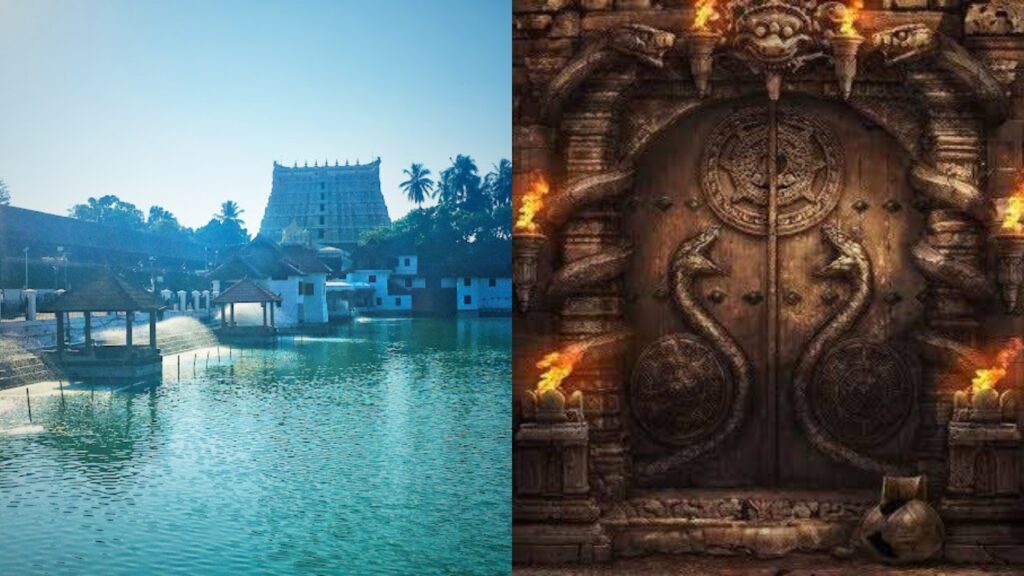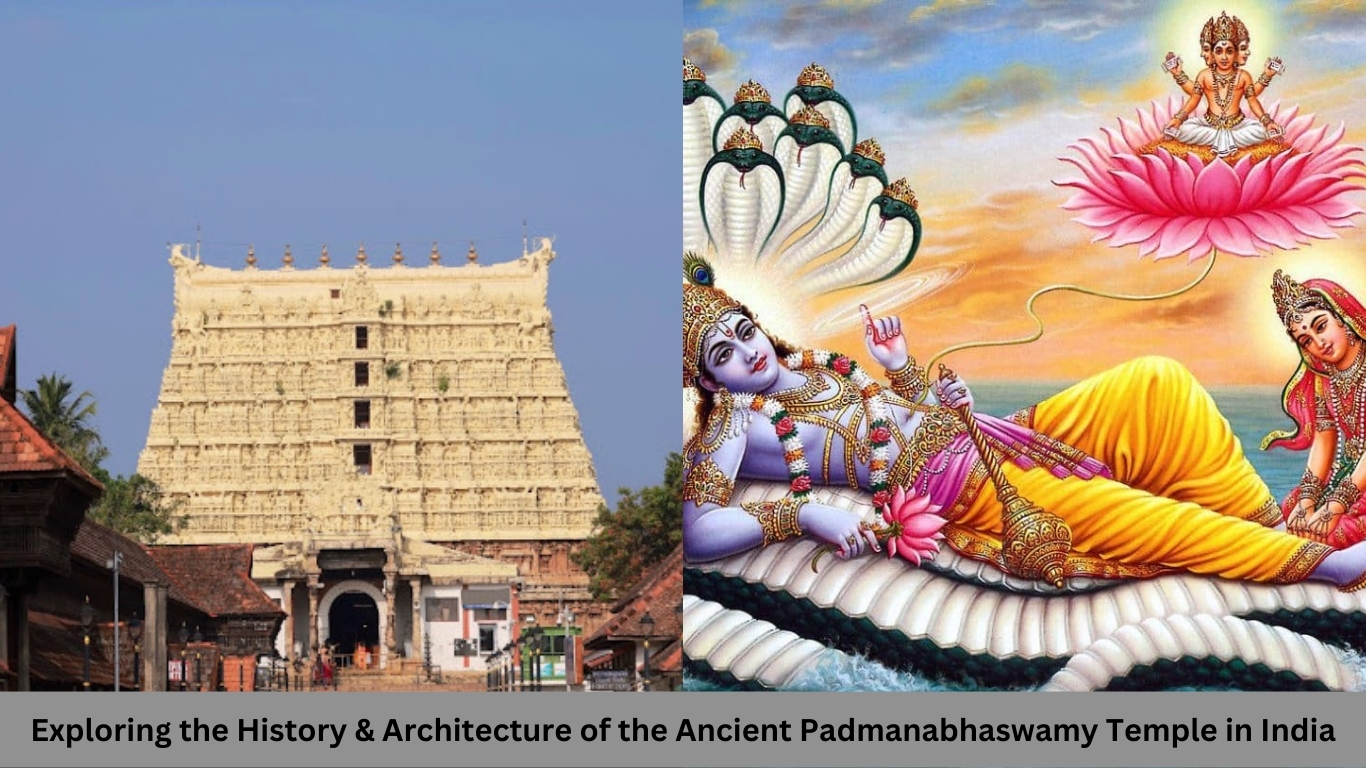The Padmanabhaswamy Temple, located in Thiruvananthapuram, Kerala, India, is an ancient and revered Hindu temple known for its rich history and architectural grandeur. The exact origins of the Padmanabhaswamy Temple are uncertain, but historical references and inscriptions suggest that the temple dates back over a thousand years. It is believed to have been constructed during the reign of the Chera dynasty, an ancient ruling dynasty of Kerala.
The temple gained prominence during the reign of the Travancore kingdom, particularly under the patronage of King Marthanda Varma in the 18th century. The kings of Travancore played a significant role in the development and preservation of the temple, contributing to its expansion and renovation over the centuries.
The combination of intricate carvings, towering gopurams, and majestic architecture makes the Padmanabhaswamy Temple a masterpiece of Dravidian temple architecture. The temple’s historical significance, coupled with its architectural grandeur, attracts devotees, pilgrims, and visitors from all around the world, providing them with a glimpse into the rich cultural heritage of Kerala and India. Let’s delve into the history and architecture of this magnificent temple.
An Overview of the Padmanabhaswamy Temple and its Significance
The Padmanabhaswamy Temple is a famous Hindu temple located in Thiruvananthapuram, the capital city of Kerala, India. It is dedicated to Lord Vishnu and is considered one of the most sacred temples in the country. However, the temple is renowned for its architectural beauty, spiritual significance, and the immense wealth it holds.
Here’s an overview of the Padmanabhaswamy Temple and its significance:
1. History and Architecture:-
The origins of the temple date back several centuries, with references to it found in ancient texts and scriptures. The temple was built in the Dravidian style of architecture and underwent renovations and expansions over the centuries. Its intricate stone carvings, detailed sculptures, and towering gopurams (ornate entrance towers) are notable features of its architecture.
2. Deity and Worship:-
The presiding deity of the temple is Lord Padmanabhaswamy, a form of Lord Vishnu. The idol of the deity is around 18 feet long and is reclining on the serpent god, Lord Anantha. The idol is made of a combination of various metals and is covered with a thick layer of gold. Only Hindus are allowed inside the main sanctum sanctorum.
3. Sacredness and Significance:-
The Padmanabhaswamy Temple holds immense religious and cultural significance for Hindus, especially for the people of Kerala. It is considered one of the 108 Divya Desams, the holy abodes of Lord Vishnu mentioned in the Vaishnava tradition. The temple is also associated with several legends and stories from Hindu mythology.
4. The Temple’s Hidden Treasure:-
One of the most remarkable aspects of the Padmanabhaswamy Temple is the immense wealth discovered within its vaults. In 2011, during an inventory process, six vaults were opened, revealing an astonishing collection of gold, silver, precious gems, and valuable artifacts. Estimates suggest that the total value of the treasure could be worth billions of dollars, making it one of the wealthiest religious institutions in the world.
5. Legal and Administrative Matters:-
The management and administration of the temple are overseen by the Travancore Royal Family, who have held the responsibility for centuries. However, following the discovery of the temple’s treasure, legal battles and debates ensued regarding the ownership and management of the wealth. The Supreme Court of India eventually appointed a committee to take inventory and ensure the protection of the assets.
The Padmanabhaswamy Temple stands as a testament to the rich cultural heritage and devotion of the people of Kerala. It continues to attract devotees, pilgrims, and tourists from around the world who visit to seek blessings, witness the magnificent architecture, and marvel at the temple’s hidden treasures.
A Closer Look at the Architecture and Design of this Ancient Wonder
The Padmanabhaswamy Temple renowned for its exquisite architecture and intricate design. Let’s take a closer look at the architectural features and design elements of this ancient wonder:
1. Dravidian Style:-
The temple built in the traditional Dravidian architectural style, which characterized by its pyramid-shaped gopurams (entrance towers), pillared halls, and elaborate sculptures. This style prominent in the temples of South India and also known for its grandeur and intricacy.
2. Gopurams:-
The temple features several towering gopurams, each intricately carved with detailed sculptures depicting various deities, mythical creatures, and divine scenes from Hindu mythology. The gopurams serve as the main entrances to the temple and adorned with colorful paintings and ornate decorations.
3. Vimana:-
The central shrine of the temple, where the main deity Lord Padmanabhaswamy resides, housed within a towering structure called the vimana. The vimana is a pyramid-like structure with multiple tiers and is adorned with intricate carvings and sculptures. It represents the mythical Mount Meru, the abode of the gods in Hindu mythology.
4. Pillared Halls:-
The temple complex features several pillared halls, including the Navaratri Mandapam and the Ottakkal Mandapam. These halls supported by rows of intricately carved stone pillars, each depicting different mythological stories and figures. The halls serve as spaces for devotees to gather and participate in religious ceremonies.

5. Sculptures and Carvings:-
The Padmanabhaswamy Temple renowned for its elaborate stone carvings and sculptures. The walls of the temple adorned with intricate bas-reliefs depicting various deities, celestial beings, and mythological episodes. The attention to detail and craftsmanship in these sculptures is remarkable.
6. Mural Paintings:-
The temple also houses a collection of ancient mural paintings that adorn its walls. These paintings depict scenes from Hindu epics like the Mahabharata and the Ramayana, as well as depictions of gods, goddesses, and celestial beings. The vibrant colors and meticulous detailing make these murals a visual delight.
7. Temple Tank:-
Adjacent to the temple complex, there is a sacred temple tank called Padmatheertham. Devotees often take ritual baths in this tank before entering the temple as a form of purification.
The architectural and design elements of the Padmanabhaswamy Temple reflect the rich cultural and artistic traditions of South India. The attention to detail, the intricate carvings, and the vibrant sculptures and paintings make it a remarkable example of Dravidian temple architecture. Therefore, temple continues to captivate visitors with its beauty, spiritual ambiance, and historical significance.
Exploring the Myths & Legends Related to this Sacred Site
The Padmanabhaswamy Temple is steeped in myths, legends, and stories from Hindu mythology. Here are some of the prominent myths and legends associated with this sacred site:
1. Legend of Lord Vishnu and Lord Shiva:-
According to a popular legend, Lord Vishnu, in his incarnation as Lord Padmanabhaswamy, was once engaged in a cosmic dance with Lord Shiva. During the dance, a contest arose between them to determine who was superior. Lord Shiva took the form of a hunter and shot an arrow at a gigantic banyan tree. Lord Vishnu, in the form of a young boy, entered the hollow of the fallen tree and revealed his divine form to Lord Shiva, establishing his supremacy. Therefore, the Padmanabhaswamy Temple is believed to be built on the spot where this event took place.
2. Anantha, the Serpent God:-
The temple is dedicated to Lord Padmanabhaswamy, who is depicted reclining on the serpent god, Lord Anantha (also known as Adi Sesha). Lord Anantha is believed to be an eternal serpent with multiple hoods, symbolizing the cosmic energy and infinite consciousness. However, the idol of Lord Padmanabhaswamy in the temple represents the deity resting on the serpent god, emphasizing the divine connection between the two.
3. The Hidden Chamber:-
One of the most intriguing aspects of the Padmanabhaswamy Temple is the existence of secret vaults within its premises. As per the legends, it is said that there are multiple underground chambers filled with immense wealth and treasures. However, these chambers are believed to be guarded by serpents, and opening them requires divine intervention and rituals. Therefore, the discovery of these hidden chambers in 2011 added to the mystique surrounding the temple.
4. Curse of Anizham Thirunal Marthanda Varma:-
According to another legend, Anizham Thirunal Marthanda Varma, the former ruler of Travancore, made a significant contribution to the temple’s expansion and renovation. It is said that during the renovation, he was warned by a sage that if any locks were put on the temple’s secret chambers, the city of Thiruvananthapuram would face dire consequences. Taking this warning seriously, the ruler left the vaults untouched, leading to the belief that divine protection surrounds the temple’s wealth.
5. The Mysterious Door:-
One of the underground vaults, known as Vault B, said to have an ancient, mysterious door called the “Vault B door”. Because, the door is believed to be sealed with intricate locks and guarded by a mythical serpent. However, it is said that only a sage with specific knowledge can open the door. And attempts to forcefully open it in the past have resulted in calamities and misfortunes.
These myths and legends add to the aura and reverence associated with the Padmanabhaswamy Temple. Because, they contribute to the temple’s cultural significance and attract devotees. And visitors who captivated by the mystical stories and divine narratives surrounding the sacred site.
Unraveling a Mystery – The Hidden Treasures Inside the Vaults of the Temple
The hidden treasures inside the vaults of the Padmanabhaswamy Temple have captivated the world with their immense wealth and historical significance. Here’s a glimpse into the mysterious treasures that discovered:
The Vault Discovery:
In 2011, the Supreme Court of India ordered the inventory and assessment of the temple’s vaults, which had remained sealed for centuries. However, at that time, only five of the six vaults open. As the sixth vault (Vault B) believe to have a mysterious door that couldn’t be easily open.
1. Vault A:-
This vault opened first and revealed a vast collection of treasures. It contained gold ornaments, jewelry, coins, and valuable artifacts. The items included golden crowns, necklaces, chains, rings, and idols made of gold. The sheer quantity and quality of the gold treasures stunned the world.
2. Vault B:-
Vault B is the most intriguing and mysterious of all the vaults. It has a massive door made of iron and is believed to be guarded by mystical powers. To this day, the door remains unopened, as attempts to open it have reportedly resulted in misfortunes and calamities. The contents of this vault, if ever revealed, remain a mystery.
3. Vault C:-
This vault contained various valuable items, including gold idols, precious stones, antique jewelry, and gold coins. The items in Vault C estimated to be worth billions of dollars.
4. Vault D:-
Vault D revealed an extensive collection of silver artifacts, including silver idols, utensils, plates, and other valuable items made of silver.
5. Vault E:-
Vault E contained a vast array of precious stones, diamonds, rubies, emeralds, and other gemstones. The quality and quantity of the gemstones found were exceptional.
6. Vault F:-
Vault F contained an assortment of copper coins from different eras, reflecting the historical significance of the temple and the region.
The discovery of the hidden treasures within the temple vaults established the Padmanabhaswamy Temple as one of the wealthiest religious institutions in the world. Because, the estimated total value of the discovered treasures was in billions of dollars, making it an unparalleled archaeological and cultural find.
However, it’s worth noting that the treasures found within the vaults have historical, cultural, and religious significance. Hence, the valuables consider offerings made by devotees and royal patrons over several centuries. It reflecting the temple’s importance as a center of devotion and patronage.
However, the management and protection of these treasures remain a subject of debate and legal proceedings. Therefore, the Supreme Court of India appointed a committee to oversee the preservation and documentation of the treasures and ensure their security.
The hidden treasures of the Padmanabhaswamy Temple continue to fascinate people worldwide. And, making it an enigmatic and unparalleled site of historical and cultural significance.

